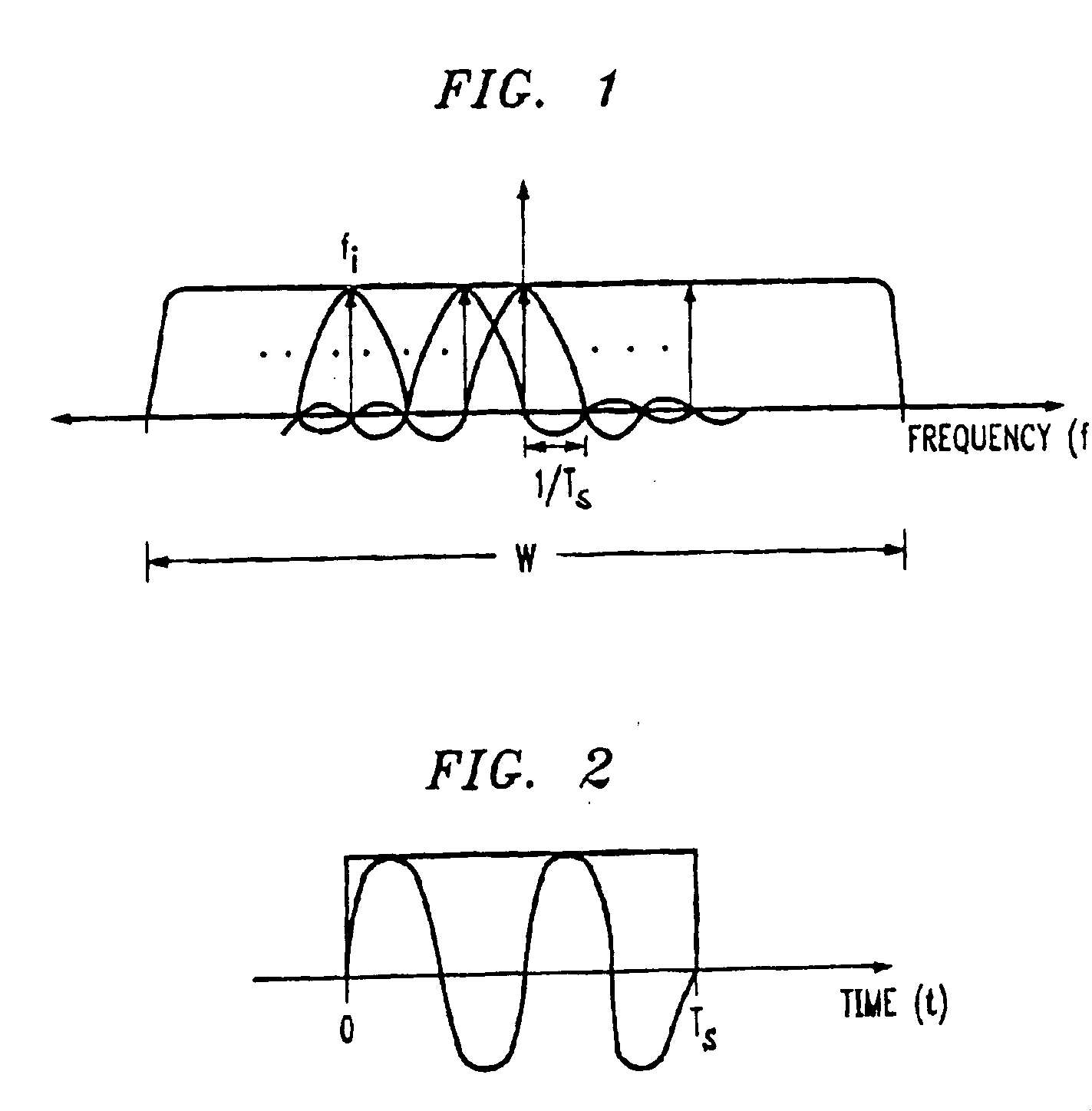Pilot use in orthogonal frequency division multiplexing based spread spectrum multiple access systems
a technology of spread spectrum multiple access and orthogonal frequency division, applied in the field of communication systems, to achieve the effect of facilitating the use of various system parameters
- Summary
- Abstract
- Description
- Claims
- Application Information
AI Technical Summary
Problems solved by technology
Method used
Image
Examples
Embodiment Construction
[0017]FIG. 1 illustrates a frequency domain representation in which a prescribed plurality of tones is generated in a prescribed bandwidth. In this example, bandwidth W is employed to generate a total of Ni tones, i.e., i=1, . . . Ni. The tones are spaced at Δƒ=1 / Ts apart, where Ts is the duration of an OFDM symbol. Note that the tones employed in this embodiment of the invention are generated differently than those generated for a narrow band system. Specifically, in a narrow band system the energy from each tone is strictly confined to a narrow bandwidth centered around the tone frequency, whereas in an Orthogonal Frequency Division Multiplexing (OFDM) system that is a wide band system the energy at a particular tone is allowed to leak into the entire bandwidth W, but it is so arranged that the tones do not interfere with one another.
[0018]FIG. 2 illustrates a time domain representation of tone ƒi within symbol period Ts. Again, note that within each symbol period Ts, data may be...
PUM
 Login to View More
Login to View More Abstract
Description
Claims
Application Information
 Login to View More
Login to View More - R&D
- Intellectual Property
- Life Sciences
- Materials
- Tech Scout
- Unparalleled Data Quality
- Higher Quality Content
- 60% Fewer Hallucinations
Browse by: Latest US Patents, China's latest patents, Technical Efficacy Thesaurus, Application Domain, Technology Topic, Popular Technical Reports.
© 2025 PatSnap. All rights reserved.Legal|Privacy policy|Modern Slavery Act Transparency Statement|Sitemap|About US| Contact US: help@patsnap.com



